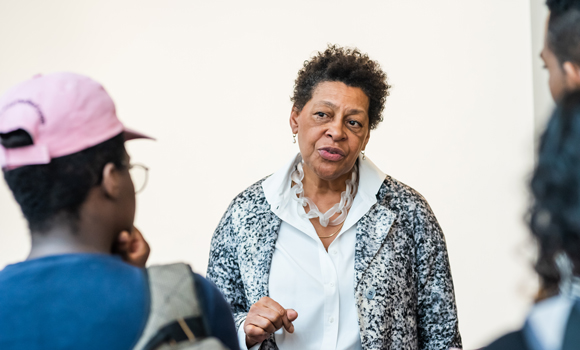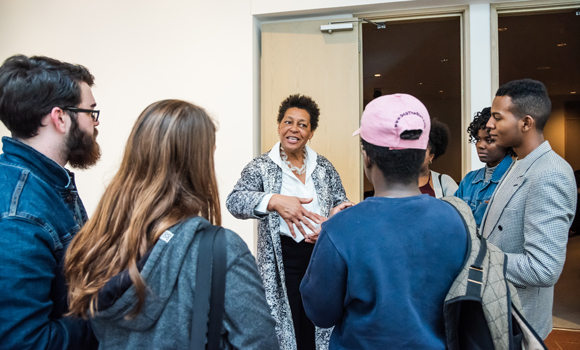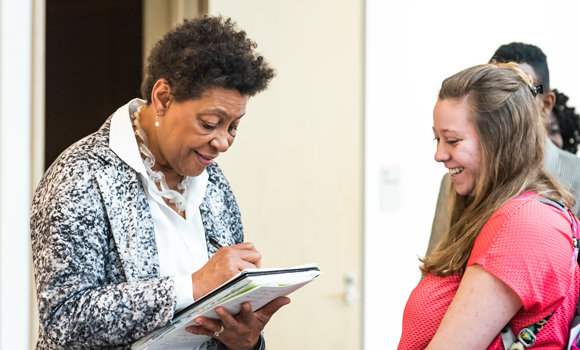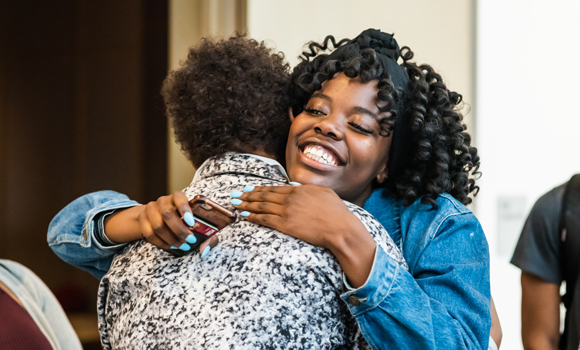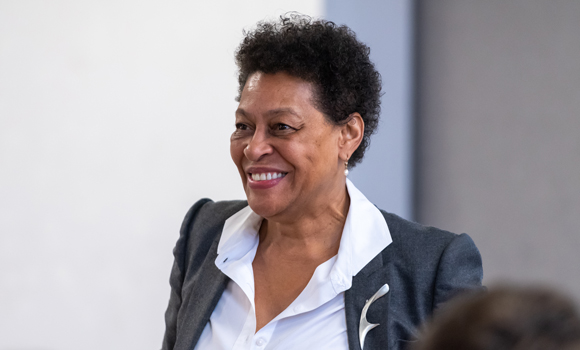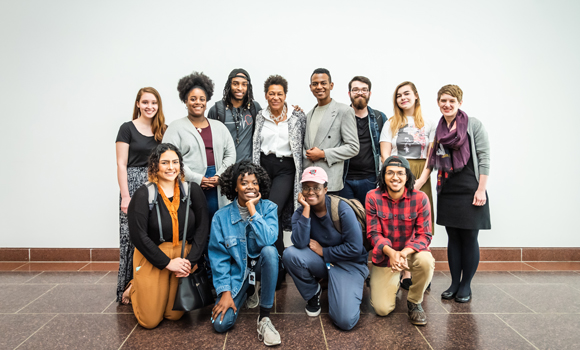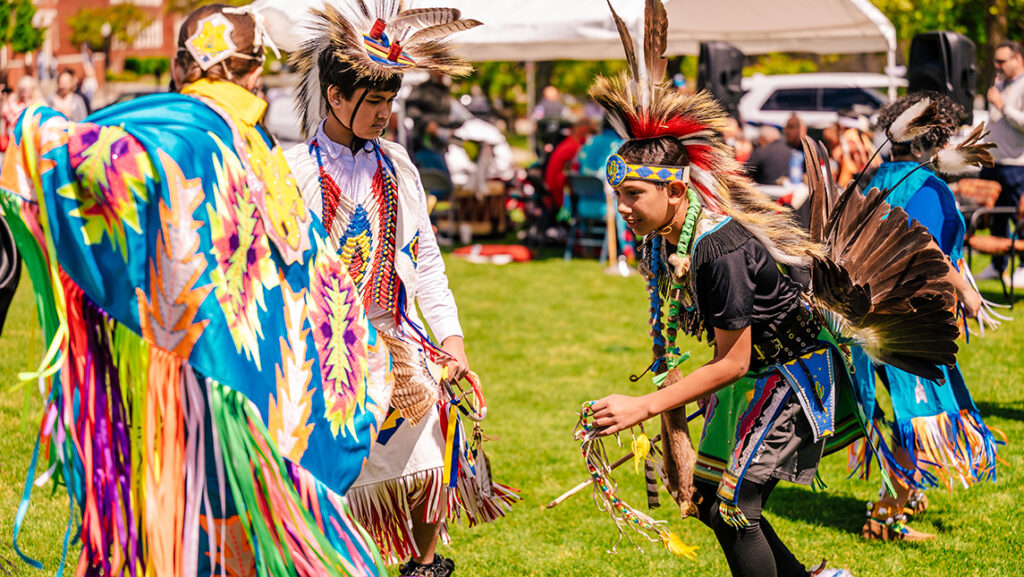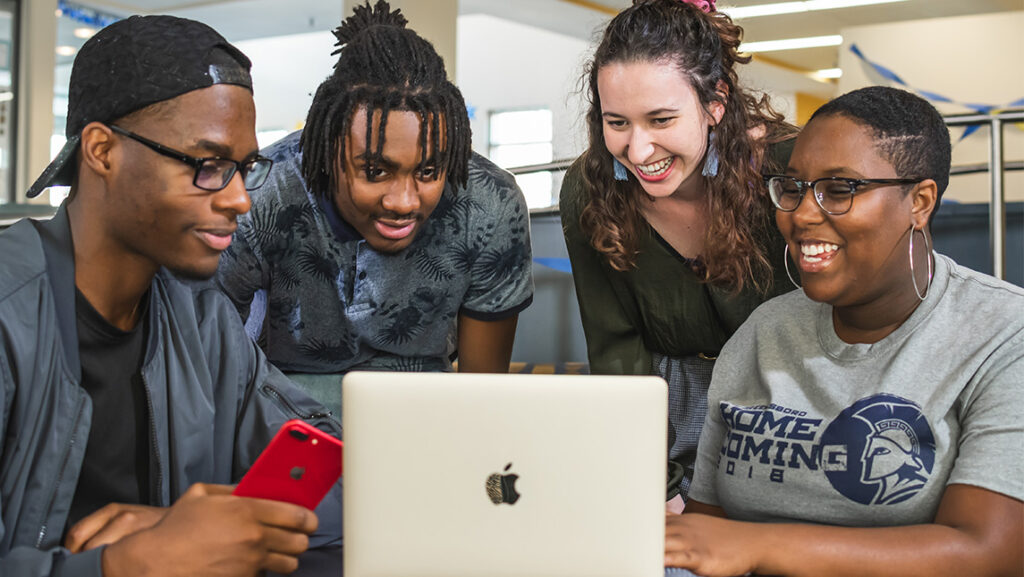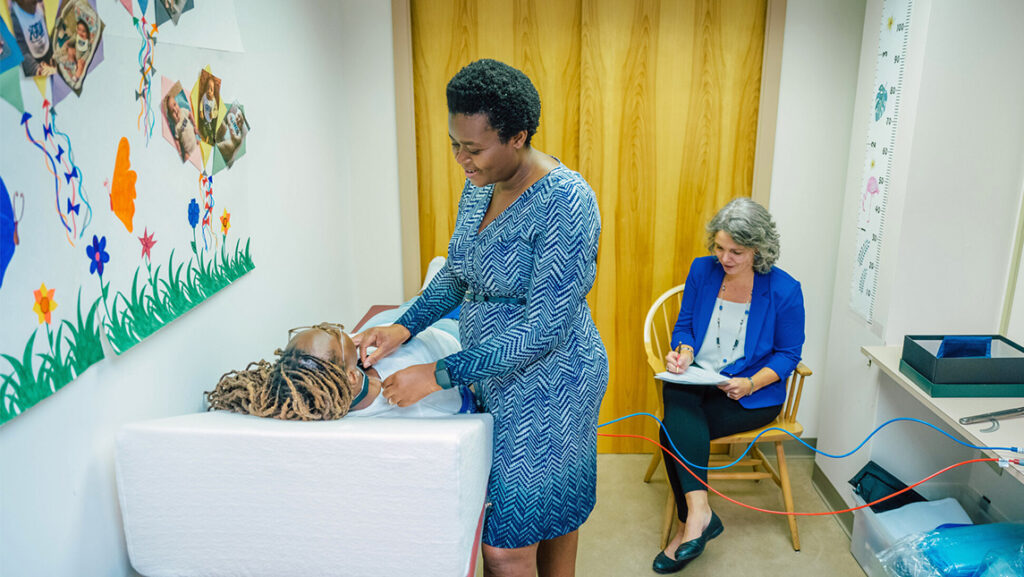UNC Greensboro’s School of Art is a place where students absorb substantial art history and hone their craft, through the BA, BFA, and MFA programs, but it’s also a place where they can gain wisdom and even personalized guidance from force-of-nature-level visiting artists.
Last week, UNCG’s University Concert and Lecture Series and Falk Visiting Artist program teamed up with the Weatherspoon Art Museum to host Carrie Mae Weems, who connected with UNCG students individually, as well as giving two presentations.
For more than three decades, the MacArthur “Genius” grant winner and recipient of the Congressional Black Caucus Foundation’s Lifetime Achievement Award has occupied a high-profile place in contemporary art with her work that explores power structures, cultural identity, sexism, family, and a myriad of other charged socio-political issues through a variety of mediums, most notably photography and short films. An artist with international clout, she was the first African American woman to have a retrospective at the Guggenheim Museum and her “Kitchen Table Series” is cited as groundbreaking and inspirational to generations of artists.
Weems gave an evening lecture for the UNCG and Greensboro art community ‒ attended by nearly 300 students, faculty, staff, and community members ‒ and earlier in the day, held a discussion with students at the Weatherspoon Art Museum following the screening of her 2008 film, “Constructing History: A Requiem to Mark the Moment.” The film examined protests and issues that came to a head during the 1960s and beyond, in a poetic manner combing through reasons people protest. Curator of Exhibitions Emily Stamey requested to feature “Constructing History” partly to tie into UNCG’s yearlong 1960s event series, “The ’60’s: Exploring the Limits.”
“Carrie Mae Weems reminds us of the profound roles that artists play in our world – as thoughtful creators, but also researchers, activists, and teachers,” said Stamey. “She offered students a compelling example of the ways in which they can struggle with all that’s difficult in the world and make an impact for the better.”
As a central part of the discussion, Weems asked students what the 1960s means for them and what ideas show up in their work. After hearing about the issues and ideas that moved the students in their own work – environmental issues, mental health, queer rights, racial violence, and other topics – Weems offered the young artists a bit of advice.
“Pay attention to your work,” she said. “It tells you what you’re interested in. Do the hard work of working that begins to tell you about who you are, and the questions that lead you to articulate the moment of your time and guide us along the human path.”
Weems also led an intimate master class for students in UNCG’s MFA studio art program, offering them advice for connecting their bodies of work with their artist statements, a crucial part of the process for any burgeoning artist.
“Both lectures and the master class really changed my thinking about my work,” said first-year MFA student Hoan Rahlan. “Now, I’m asking myself: What kind of language am I conveying when people view my work? Weems mentioned that we need to consider what the problems are and how to solve the problems. Hearing her advice really provoked me to think deeply about my own artistic process.”
“It was a tremendous gift to have Carrie Mae Weems visit UNCG,” said second-year graduate student Katherine Colborn. “She brought not only her experience, but her earnestness, honesty, and attentive wisdom to our graduate workshop. Our time with her is still reverberating in our hallway discussions and studios.”
By Susan Kirby-Smith, University Communications
Photography by Jiyoung Park and Martin W. Kane, University Communications
